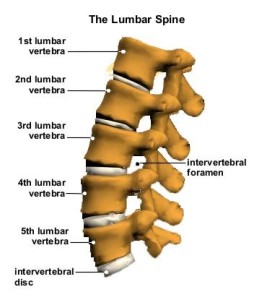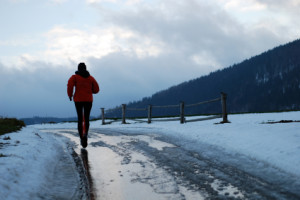Brampton Location – News & Announcements
What’s the deal with Lower Back Pain?

The Lumbar Spine consist of 5 spines. Between each spine has a disc with nerves coming out from between these spines. These nerves originate from the spinal cord and inside the vertebral column. With aging or injury, a disc can bulge out from the spine and compresses the nerves which are coming out of the same spine. These nerves comes out from the spine and runs down the legs. When these nerves are compressed due to disc disease, the painful tingling, numbness or that pins and needles feeling , goes down to one or both legs depends on the level of compression. Physiotherapy treatments could help to relieve or decrease the intensity of this pain.
Contact Form and Function today for your assessment!
Prevention of hypothermia and preparation for cold season events

Planning for mass-participation endurance events should include preparation for the treatment of hypothermic patients. This is true even when the event will be held in moderate conditions ( T < 28 ‘C or 82.4 ‘F ), and it is particularly important when participation seems likely. Equipments, supplies, and personnel requirements vary based on the type of event , anticipated weather conditions, and event duration, but several factors merit universal considerations:
- Warm fluids for oral and iv hydration should be available at all aid stations. Iv bag warmers or microwave ovens should be present to ensure the fluids can be warmed for late completions.
- Low temperature thermometers, preferably tympanic, should be available to treatment personnel.
- A warm , dry changing area should be established at the finish area to allow the athletes to recover from the events and escape further environmental heat losses.
- Readily accessible, appropriate transportation to a treatment facility capable of supporting active internal rewarming ( peritoneal lavage, cardiopulmonary bypass) should be on standby. The transporting vehicles must be outfitted for capability to monitor the patient’s cardiac status and provide heated iv hydration and inhalation therapy.
The Formula for Happiness

We are always told that being active is important, but the question remains, why? Did you know that being active can help with every aspect of your life including how happy you are?
Conditions such as Heart Disease, Stroke, High Blood Pressure and Obesity are all related to how physically active you are. With all conditions, plaque builds up in your body and restricts the blood to pass through the body causing many different conditions. Plaque is built up because of high cholesterol levels combined with a few other elements creating a hard substance on the walls of the heart and various organs.
The most effective way to reduce these harmful effects is to be physically active. Physical activity has been proven to reduce the cholesterol in your blood, as well as burn fat as well as limiting the number of low density lipoproteins (LDL) to be formed in the body.
In addition to reducing the harmful effects of cardiovascular disease, physical activity also gives you more energy throughout your day. When you become active, you make your heart stronger and more able to pump blood at a greater volume. This naturally causes an increase in energy. In addition it helps us sweat which naturally eliminates the toxins in our blood which is the cause of fatigue.
Being active also will create a better mood. When we work out, endorphins are released. This particular hormone is responsible for making us happy. This hormone is knows to stay circulating in our bodies for several hours which also is responsible for making us calm and more patient. A very good attribute to have!
You only require 30 minutes of activity 3 times a week. This very short period of time is all that’s required to make yourself healthy and happy!
Speak with one of the health professionals at Form and Function today to get started on your path to happiness!
Paul Henein
What doesn’t kill you makes you stronger!

We all want to feel and look our best and one way to help with this is through exercise. Exercise and eating a healthier diet are common recommendations doctors are telling their patients everyday and there is a reason behind this.
There are many benefits with exercise, which I will go through at least seven reasons for you to hit the gym even harder!
- Exercise can help prevent excess weight gain or help maintain weight loss. The more intense the activity, you burn more calories. You can also incorporate more activity into your everyday life by taking the stairs instead of the elevator at work.
- Exercise combats health conditions and diseases. Being active boosts high-density lipoprotein (good cholesterol) and decreases unhealthy triglycerides. Exercise can also prevent or manage conditions such as stroke, type 2 diabetes, depression, and arthritis.
- Exercise improves mood. A workout at the gym or a brisk 30-minute walk can help you feel more relaxed and happier.
- Exercise boosts energy. Regular physical activity can improve your muscle strength and boost your endurance.
- Exercise promotes better sleep. Regular physical activity can help you fall asleep faster and deepen your sleep.
- Exercise helps promote a healthier sex life. Regular physical activity can leave you feeling energized and looking better, which may have a positive effect on your sex life.
- Exercise can be fun. Doing group workouts with friends or taking hikes with family can be a great way to spend some quality time with loved ones on top of getting some physical activity in as well.
If you want to know more about how to start an exercise routine and injury prevention, come by Form and Function Clinic. Our physiotherapist and chiropractors would love to show you how.
Running Shoe Selection

The function of a running shoe is to protect the foot from the stress of running, while permitting you to achieve
your maximum potential. Selecting the right shoe for your foot can be confusing without the proper knowledge.
People with low arches, called pronators, will need a shoe that provides stability. A shoe with good cushioning
is important for people with high arches, called supinators.
There are three main features that you need to consider when selecting a running shoe: shape, construction,
and midsole.
Shape
To determine the shape of the shoe, look at the sole. Draw a straight line from the middle of the heel to the top
of the shoe. In a curve-shaped shoe, most comfortable for supinators, the line will pass through the outer half of
the toes. A straight-shaped shoe will have a line that passes through the middle of the toes. These shoes are
built to give pronators added stability.
Construction
Take out the insole and look at what type of stitching is used on the bottom. In board construction shoes, built
specifically for pronators, the bottom of the shoe will not have any visible stitching. Combination shoes,
appropriate for mild pronators or supinators, will have stitching that begins halfway. On slip-constructed shoes,
you will see stitching running the entire length of the shoe providing the flexibility supinators need.
Midsole
Most of the cushioning and stability of a running shoe is determined by the midsole. A dual-density midsole
provides shock absorption as well as some stability, perfect for pronators. Single density midsoles offer good
cushioning but are not great at providing stability, making them better for supinators.
Keep in mind that a chiropractor can help you prevent running-related problems by assessing your gait, as well
as the mobility of the joints in your feet, legs, pelvis and spine.
Dr. Roger Singh
Types of Stretching
Dynamic StretchingThis stretching technique suggest exactly what it says. It is stretching a limb throughout its range of motion with movement in order to reach its fullest potential. During dynamic stretching it does not ask for bouncing or a jerking motion. An example of this would be to swing your leg and let it naturally reach its full potential.
Why Use Dynamic Stretching?
This technique has been proven to improve the readiness of your muscles before exercise. Dynamic stretching is done before physical activity to ensure your muscle are ready to contact and move freely.
Static Stretching
This method of stretching is the complete opposite of Dynamic. Static stretching requires you to hold your stretch for a prolonged period of time. Typically 30-90 seconds depending on how tight the muscle is. While stretching you want to be controlled with little movement, bouncing during these stretches can cause injury. An example of this method would be to touch your toes and hold.
Why Use Static Stretching?
Static stretching is done after being physically active. This relaxes the muscles after being active to prepare the body for recovery. Static stretching will ultimately increase your flexibility and range of motion.
Gardening Tips

Warm up
Before you begin any physical activity, warming up is a key factor in preventing injury. Take a walk, even on the
spot. Ten to 15 minutes should do it. Don’t forget to lift your knees and gently swing your arms.
Stretch before you start
To plant and rake without the ache, do each of these stretches five times. Don’t bounce, jerk or strain.
Stretches should be gentle and should not cause pain.
Upper Body
YOUR SIDES
1. Extend your right arm over your head.
2. Bend to the left from the waist.
3. Hold for 15 seconds and repeat on the other side.
YOUR ARMS AND SHOULDERS
1. Hug yourself snugly.
2. Slowly rotate at the waist as far as is comfortable to the left, then to the right.
YOUR BACK
1. In a seated position, bend forward from the hips, keeping your head down.
2. Reach for the ground.
Lower Body
YOUR THIGHS
1. Face a wall or tree and support yourself against it with one arm.
2. Bend your right knee and grasp your ankle or pant leg with your left hand.
3. Hold for 15 seconds and repeat on the other side.
YOUR HAMSTRINGS
1. Stand.
2. Reach your hands to the sky.
3. Then bend at the waist and reach toward your toes.
Dr. Roger Singh





